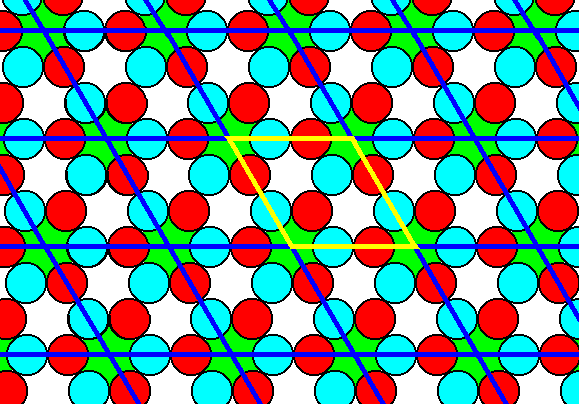
e-mail :

Sequel to the Plane Group P31m
First we reproduce Figure 28 of the previous document :

Figure 1. The P31m pattern of Figure 27 of the previous document furnished with its appropriate hexagonal point lattice. A unit cell is indicated.
The pattern is adapted from the ionic pattern of Figure 14 of the previous document. This adaptation -- indicated by the green star-shaped patches in Figure 1 -- has qualitatively changed the pattern from a P3m1 pattern to a P31m pattern.
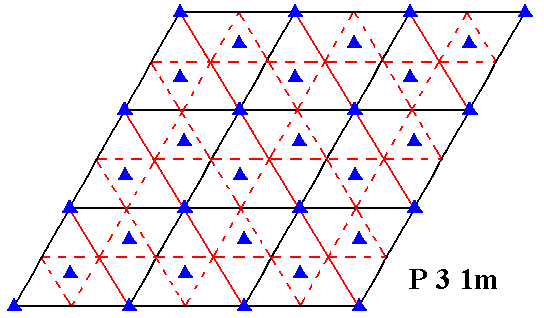
Figure 2. Symmetry content of 2-D patterns according to the Plane Group P31m. Glide lines are indicated by dashed lines. Mirror lines are indicated by red and by black solid lines, while the 3-fold rotation axes are indicated by small triangles.
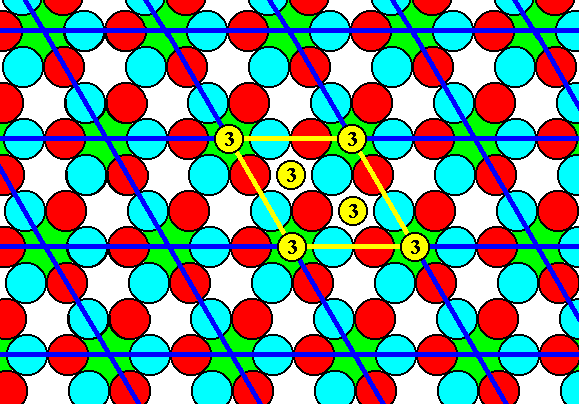
Figure 3. The 3-fold rotation axes are present in accordance with the symmetry diagram for the Plane Group P31m (Figure 2). Only some axes indicated.
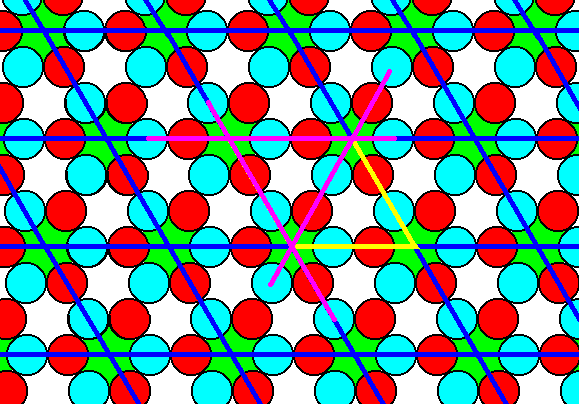
Figure 4. The mirror lines (purple) are present in accordance with the symmetry diagram for the Plane Group P31m (Figure 2). Only some of them are indicated.
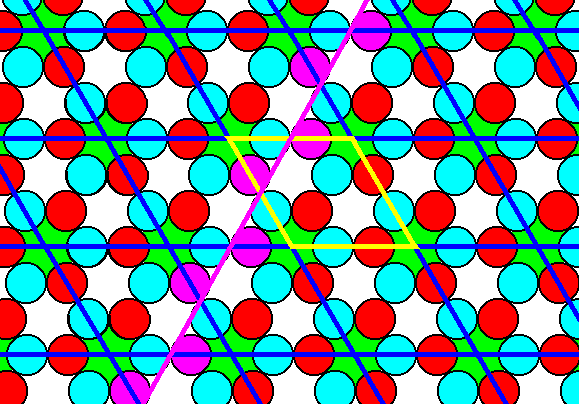
Figure 5. A first set of glide lines is present in accordance with the symmetry diagram for the Plane Group P31m (Figure 2). Only one glide line is indicated (purple).
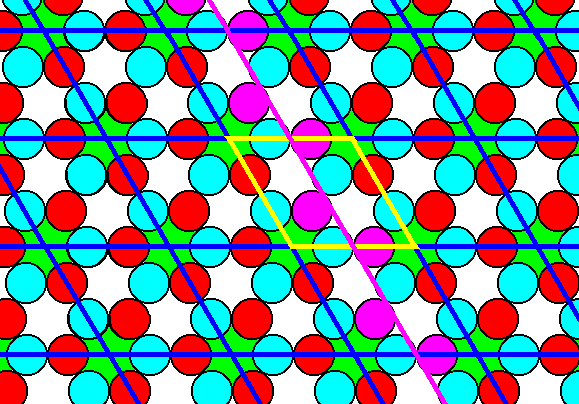
Figure 6. A second set of glide lines is present in accordance with the symmetry diagram for the Plane Group P31m (Figure 2). Only one glide line is indicated (purple).

Figure 7. A third set of glide lines is present in accordance with the symmetry diagram for the Plane Group P31m (Figure 2). Only one glide line is indicated (purple).
We have now demonstrated that the pattern of Figure 1 and of Figure 27 of the previous document belongs to the Plane Group P31m.
The next Figure indicates a suitable repeat unit that can serve to represent the Complex Motif of the present pattern :
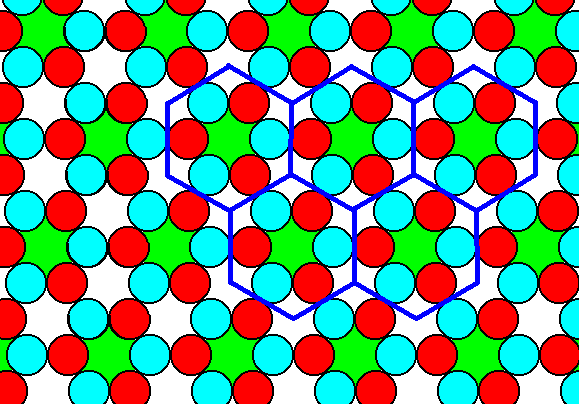
Figure 8. A hexagonal repeat unit of the present P31m pattern is indicated.
When we isolate this unit we automatically eliminate the simple translations, and obtain the Complex Motif of the pattern. See next Figure.
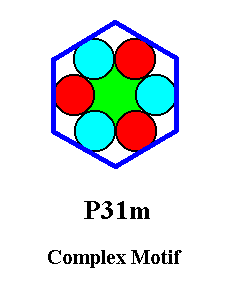
Figure 9. Complex Motif of the P31m pattern of Figure 1 (and also of Figure Figure 27 of the previous document).
The hexagonal boundary line (dark blue) does not as such belong to the Complex Motif. It belongs to the motif's background (in fact half its thickness).
The next Figure clearly shows the point symmetry of this Complex Motif :
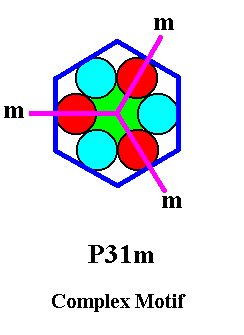
Figure 10. 3m point symmetry of the Complex Motif of the P31m pattern of Figure 1 (and also of Figure Figure 27 of the previous document).
The hexagonal boundary line (dark blue) does not as such belong to the Complex Motif. It belongs to the motif's background (in fact half its thickness).
The Complex Motif has three congruent antimers.
The simplest planimetric figure expressing this symmetry is the Equilateral Triangle (regular trigon), which accordingly is the promorph or planimetric basic form of all crystals of the Plane Group P31m, and with it of the Class 3m. See next Figure.

Figure 11. The Equilateral Triangle (regular trigon) is the promorph or planimetric basic form of all crystals belonging to the Plane Group P31m and with it to the Class 3m.
In the next document we are going to c o m p a r e the Plane Groups P3m1 and P31m, to detect their similarities and their differences.
e-mail :

To continue click HERE to further investigate the Plane Groups with respect to their Complex Motifs.
e-mail :

back to retrospect and continuation page
back to Internal Structure of 3-D Crystals
back to The Shapes of 3-D Crystals
back to The Thermodynamics of Crystals
back to Introduction to Promorphology
back to Anaxonia, Homaxonia, Polyaxonia
back to Protaxonia : Monaxonia
back to Stauraxonia heteropola
back to Homostaura anisopola, Heterostaura
back to Autopola oxystaura and orthostaura
back to Allopola (introduction)
back to Allopola amphipleura and zygopleura
back to the Basic Forms of Cells I
back to the Basic Forms of Cells II
back to the Basic Forms of Organs
back to the Basic Forms of Antimers
back to the Basic Forms of Metamers
back to the Basic Forms of Persons
back to the Basic Forms of Colonies
back to the first part of the Preparation to the Promorphology of Crystals
back to the second part of the Preparation to the Promorphology of Crystals
back to the third part of the Preparation to the Promorphology of Crystals
back to the fourth part of the Preparation to the Promorphology of Crystals
back to the fifth part of the Preparation to the Promorphology of Crystals
back to the sixth part of the Preparation to the Promorphology of Crystals
back to the seventh part of the Preparation to the Promorphology of Crystals
back to the eighth part of the Preparation to the Promorphology of Crystals
back to the ninth part of the Preparation to the Promorphology of Crystals
back to the tenth part of the Preparation to the Promorphology of Crystals
back to the eleventh part of the Preparation to the Promorphology of Crystals
back to the twelfth part of the Preparation to the Promorphology of Crystals
back to the thirteenth part of the Preparation to the Promorphology of Crystals